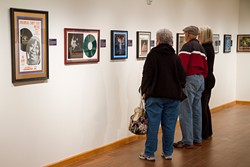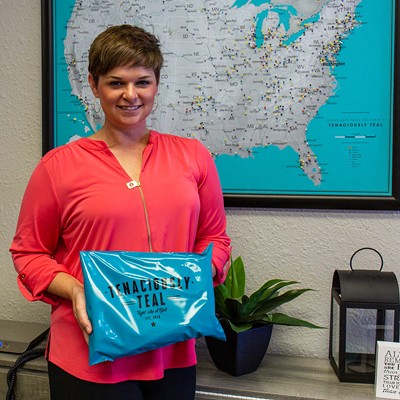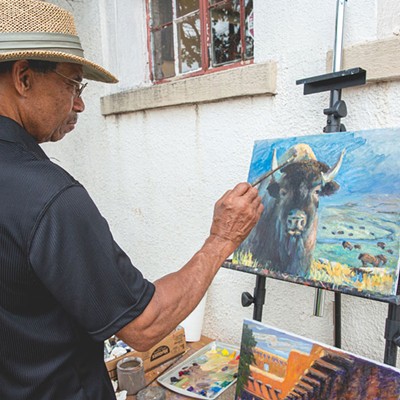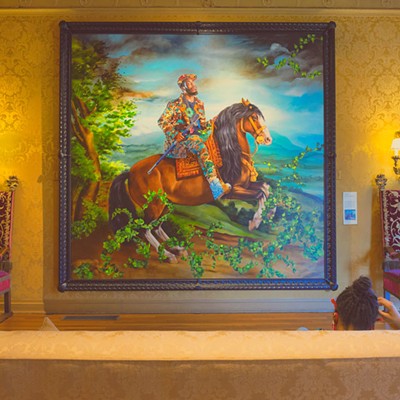In the age of digital downloads, it is easy to forget that releasing an album is a long, laborious artistic exercise for musicians. The songwriting and recording process is something a select few are able to partake in, and the album itself is an endangered artistic endeavor in its own right. But Oklahoma City Community College (OCCC) hosts an exhibit of album artwork at OCCC’s Visual and Performing Arts Center through Friday.
Tailored Jackets: Second Fitting reveals the artistry and evolution of vinyl record jackets and compact disc covers over the eight-decade stretch between 1923 and 2003. The 59-piece collection, on loan from an Oklahoma City private collector, is a more detailed follow-up to the Tailored Jackets exhibition last October. Like the prior exhibit, the vast majority of the jackets are signed by the albums’ musical artists.
The framed jackets and covers produce a multicolored streak across the lighted and angled walls of Inasmuch Gallery at OCCC.
The private collector’s love of minimalism also works its way into the exhibit. Other than a few outliers, all vinyl jackets are displayed in identical 15 3/4-by-15 3/4-inch frames. All mattes are limited to three colors complementing those found in the jacket, and music from the displayed albums fills the atmosphere of the gallery.
The oldest pieces in the exhibit are not album jackets but objects that lead to their creation. “Down Hearted Blues / Gulf Coast Blues,” a 1923 single by American blues singer Bessie Smith, is first among the frames along the gallery’s wall. The piece is composed of a small booklet of sheet music for the single, with Smith’s photograph gracing the cover. Two vinyl records of the single flank the booklet, one to each side.
“Research shows that covers of sheet music were an influence on album jackets,” said Scott Tigert, cultural programs assistant at OCCC.
The next frame contains a promotional poster for blues singer Ma Rainey’s 1924 single “Dream Blues,” with the record protruding from a slot in the upper left-hand corner.
“This is believed to be the first example of an artist’s portrait on the label of a record,” Tigert said.
The label is a circular sticker in the center of the record. Printed on this label is a blue-and-white portrait of Rainey.
These examples led to the stylized album jackets and covers we see to this day. Columbia Record’s first art director Alex Steinweiss is credited with creating the first modern jackets in 1938.
The collection runs the gamut of rock music history from Big Brother & the Holding Company’s 1968 release Cheap Thrills, designed by underground cartoonist Robert Crumb, to Talking Head’s Stop Making Sense, featuring leader sing and guitarist David Byrne wearing the big suit, and Pearl Jam’s booklike Vitalogy CD packaging.
Print headline: Vinyl veneration, An exhibit at Oklahoma City Community College illustrates the evolution of album artwork.













